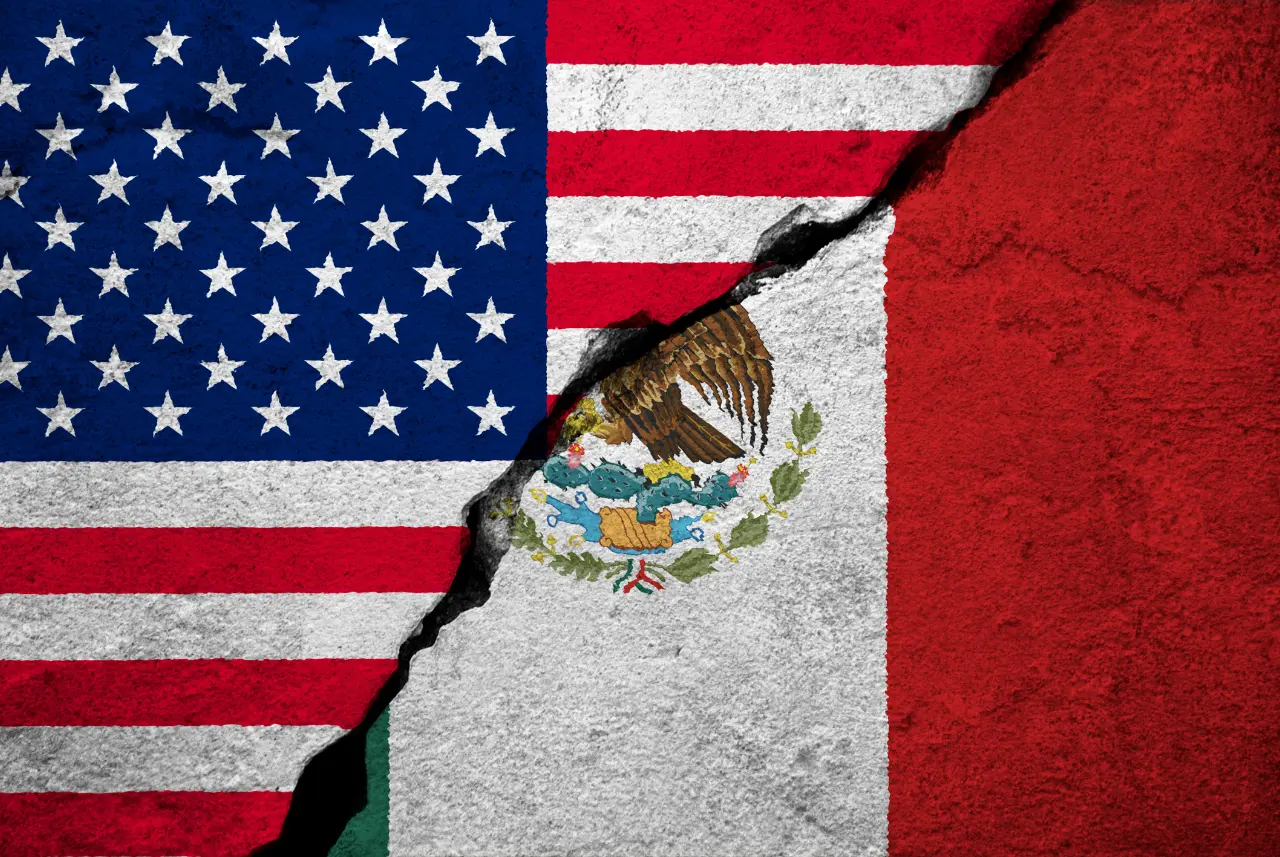
By Helios Ruiz. SPR Informa. Mexican Press Agency.
In recent weeks, Mexico and the United States have shown themselves to be on opposite ends of the spectrum when it comes to their goals at the border. While Mexico seeks to protect its economy and prevent capital flight, the U.S. is advancing a militarized agenda focused on curbing migration and fentanyl trafficking. These differing objectives are creating a divide in the path toward an effective and equitable agreement.
The recent “Big Beautiful Bill” passed by the U.S. Congress—also referred to as the “One Big Beautiful Bill”—includes a record increase in spending on border security and migration. This includes more than $150 billion USD for the border wall, expanded ICE operations (with the capacity to house 100,000 detainees), and the hiring of thousands of agents. This represents a radical deepening of the militarization of the border and, for many Mexicans, sends a clear message, namely that the United States isn’t just trying to regulate migration—it wants to stop it altogether.
For Mexico, this poses a challenge. President Claudia Sheinbaum has responded diplomatically, but with a strong emphasis on protecting national economic sovereignty. The risk is that, as migration pressure becomes tied to militarization, a perception of crisis could grow: on one side, with citizens forced to leave their homes; on the other, a neighbor reinforcing fences and controls.
Mexico’s diplomatic strategy has aimed for balance—not directly confronting, but not yielding unconditionally either. Still, the narrative from Washington, full of “national emergency” rhetoric and promises of mass deportations, complicates the negotiations. While the United States pushes for strict control with massive spending, Mexico risks becoming entangled in a humanitarian crisis as it tries to preserve vital economic flows.
There’s a direct clash. Mexico needs to maintain competitiveness in the face of aggressive U.S. fiscal pressure, avoid additional tariffs, and retain foreign investment. At the same time, the United States demands zero tolerance for irregular migration and fentanyl trafficking—both serious internal security threats. Ideally, a binational agreement would connect economic development in border areas with effective controls and anti-drug cooperation. But so far, both countries are speaking different languages.
To move forward, both governments must shift from unilateralism to genuine, balanced dialogue:
• Acknowledging mutual interests. Mexico must accept that the United States wants to stop illicit flows. The U.S. must understand that militarized pressure harms investment and employment south of the border.
• Articulating concrete commitments. Ecuador doesn’t debate border security without rural development funds; likewise, Mexico could offer legal pathways for certain migration flows if the United States abandons mass deportations.
• Supporting a binational rather than national approach. The migration crisis and fentanyl trafficking can only be solved through coordination. Solutions must include shared investment, not one-sided demands.
• Prioritizing diplomacy over short-term actions. National emergency rhetoric and tariff threats erode trust and cooperation.
A border policy based solely on militarization and deportation—as proposed in the recent “Big Beautiful Bill”—may halt flows, but it won’t solve the root causes of migration or the movement of drugs. Nor will it guarantee economic stability for Mexico. For both nations, it would be far more productive to solidify a comprehensive agreement involving smart, shared border control combined with investment that reduces reliance on migration. Only then can they move beyond immediate interests and construct a long-term solution.
The evidence is clear: when stakeholders want different outcomes, dialogue fractures. Mexico must safeguard its economy; the United States wants to stop migration and the flow of fentanyl. However, borders do not understand opposing agendas. It’s time to synchronize the clocks. What’s needed is a frank and balanced dialogue that integrates economic, social, and security goals—respecting sovereignty while acknowledging inevitable interdependence. Only that can offer a viable, sustainable future for both nations.
Mexican Press Agency is part of ALMA, which is dedicated to news and information about Mexico and Mexicans in the United States and is a fiscally sponsored project of Social Focus, a 501(c)(3) nonprofit organization based in Redwood City, California.